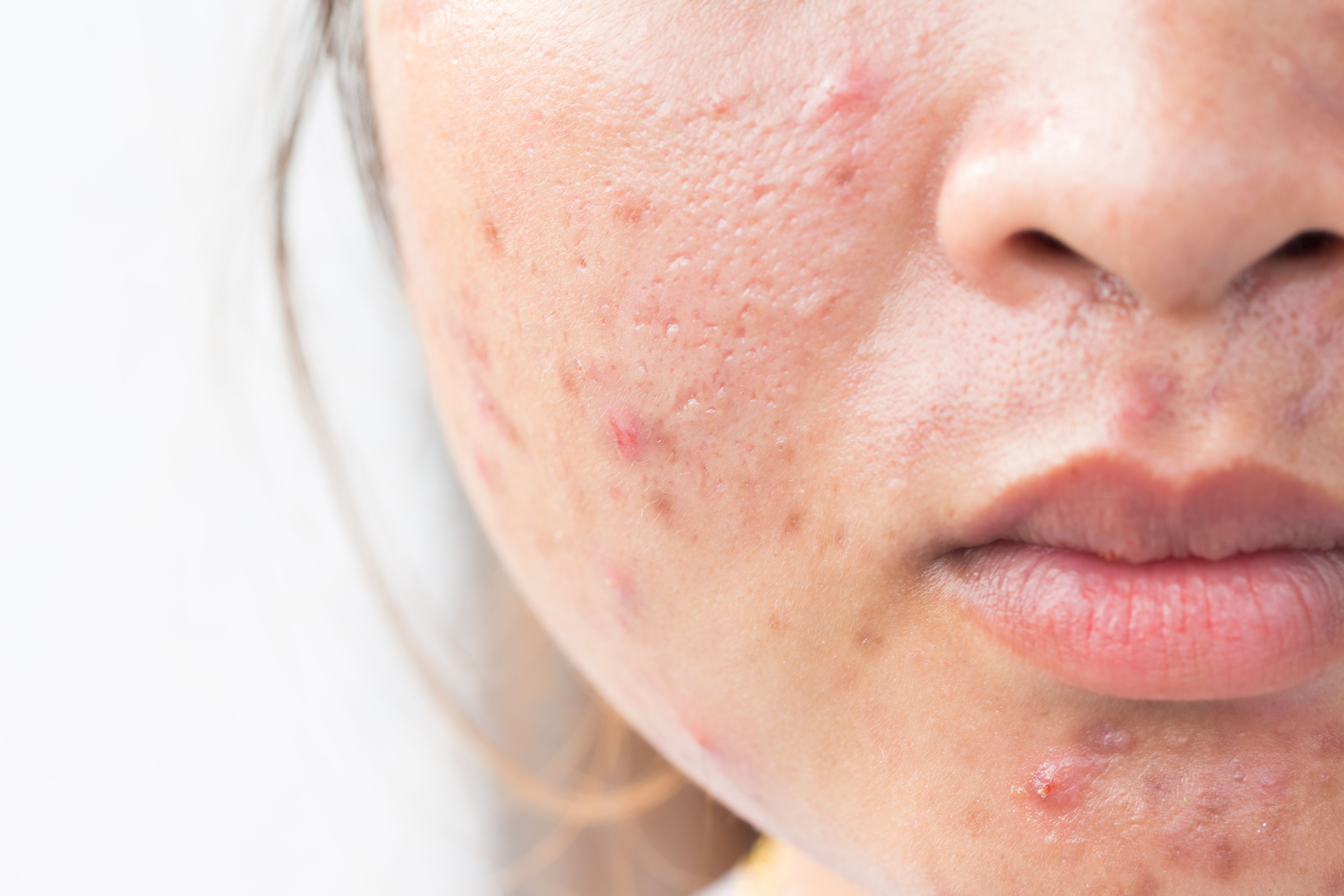- Center on Health Equity & Access
- Clinical
- Health Care Cost
- Health Care Delivery
- Insurance
- Policy
- Technology
- Value-Based Care
Combining Surgical, Nonsurgical Approaches Holds Promise for Treating Facial Acne Scars
According to a review, recent progress offers hope in the form of treatments, such as combination therapy that utilizes surgical and nonsurgical methods, for individuals with facial acne scars.
Recent advancements provide promising solutions for patients seeking treatment of facial acne scars, including combination therapy incorporating both surgical and nonsurgical approaches, according to a review published in Skin Research & Technology.1
Image credit: frank29052515 - stock.adobe.com

Acne is a common chronic inflammation of hair follicles and sebaceous glands that impacts about 85% of adolescents and can result in varying degrees of scarring. Acne scarring can produce various facial disfigurement and psychological disorders while impacting patient quality of life. Several factors can cause acne-related inflammation, including androgens, increased sebum secretion, abnormal keratinization, proliferation of Propionibacterium acnes, and inflammatory reactions of lymphocytes, macrophages, and neutrophils. There are 3 types of acne scarring2:
- Atrophic scars: flat or shallow depressions that heal below the top layer of skin
- Hypertrophic scars: raised lumps of scar tissue where the acne once was that are the same size as the acne that caused them
- Keloids: similar to hypertrophic scars except the scar is larger than the acne that caused them
“Currently, acne scars remain a challenge for dermatologists as a common sequela of acne vulgaris. Scientific research and clinical trials to improve acne scars are still hot research topics in medicine. There are now many effective ways to improve acne scars. Still, each acne treatment method has its advantages and disadvantages, which can be optimized by combination therapy to achieve better results,” the authors noted.
Nonsurgical treatments include photonic treatment, ablative lasers, nonablative lasers, chemical peel therapy, skin fillers, microneedling therapy, and thread lifting surgery. Ablative lasers, such as CO2 lasers, stimulate collagen regeneration and improve scar tissue. Nonablative lasers, like pulsed dye lasers and erbium glass lasers, help reduce boxcar-type atrophic acne scars. The paper highlighted the role chemical peel therapy plays in promoting exfoliation and collagen production. Skin fillers, microneedling therapy, and thread lifting surgery are other methods to improve acne scars, each with its own benefits and considerations for different types of scars.
Dermabrasion is a surgical cosmetic technique that mechanically abrades the skin's superficial layers, promoting reepithelialization, repigmentation, and collagen production. Initially effective for shallow scars, it has limited impact on deeper scars like ice pick and atrophic scars. While it can achieve significant results, its depth must be carefully controlled to avoid complications like new scars, pain, erythema, and dyschromia. Despite its efficacy, dermabrasion is gradually being replaced by other treatments due to these complications and lower tolerability.
Punch excision treatments, including punch elevation, excision, and grafting, target different acne scar types. Elevating scars alleviates contraction, excision removes ice pick scars, and grafting corrects irregular textures. Laser therapy can enhance results. Though some scarring may remain, punches are a last resort for deep scars.
Subcutaneous excision treats rolling acne scars effectively but less so for boxcar scars. It's combined with other treatments like microneedling or laser therapy for better results and fewer complications. However, skilled operators are needed to minimize risks and achieve optimal outcomes.
Combined therapy for acne scars involves using multiple treatments to enhance results synergistically. Common combinations include laser with platelet-rich plasma (PRP), which delivers growth factors for tissue repair. Studies show PRP's superiority over other treatments like trichloroacetic acid or vitamin C.
Additionally, stem cell therapies, such as adipose-derived stem cells and exosomes, show promise in improving skin texture and healing. Emerging therapies like epidermal growth factor ointment and exosomes from adipose tissue stem cells offer innovative approaches to acne scar treatment, often with improved outcomes and reduced side effects compared to traditional methods.
The authors concluded, “The specific treatment plan should be individualized according to the patient’s situation. Before implementing a treatment plan, experimental treatment of scars can be conducted on a small scale to evaluate efficacy and safety. At the same time, the design of treatment plans should also consider other factors such as patient expectations, recovery time, and economic costs.”
References
1. Miao L, Ma Y, Liu Z, Ruan H, Yuan B. Modern techniques in addressing facial acne scars: a thorough analysis. Skin Res Technol. 2024;30(2):e13573. doi:10.1111/srt.13573
2. 5 types of acne scars and how to treat them. Healthline. October 30, 2019. Updated January 24, 2024. Accessed May 3, 2024. https://www.healthline.com/health/skin-disorders/types-of-acne-scars
Integrated Care for Chronic Conditions: A Randomized Care Management Trial
December 3rd 2025The authors sought to understand the differential impact of payer-led community-based care management approaches on stakeholder-oriented outcomes for publicly insured adults with multiple chronic conditions.
Read More
